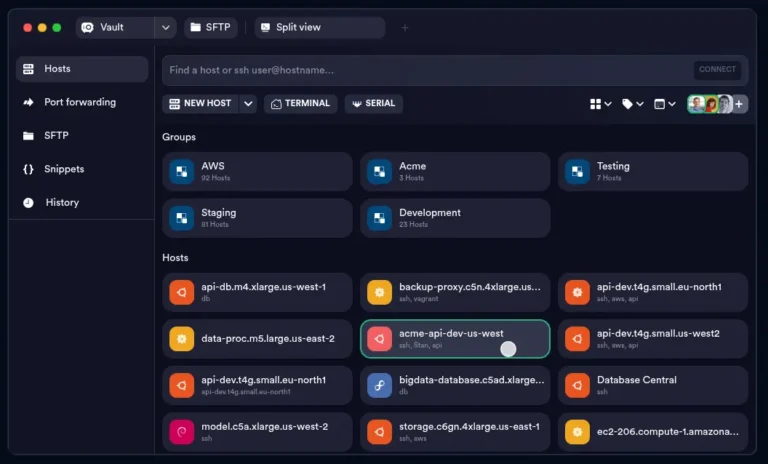It is time once again to share a list of the best free and open-source software I’ve come across in 2025. Some of these programs are long-standing favorites that continue to improve year after year, while others are newer projects that caught my attention and proved useful in my daily Linux workflow.
As always, this is not meant to be an exhaustive list, but rather a personal collection of tools that I’ve found reliable, practical, and worth recommending. It is in the spirit of sharing that I’m writing this article, hoping you’ll discover something here that makes your Linux experience even better.
How to Install These Tools
Before diving into the list, let’s talk about how to actually get these tools installed through your distribution’s package manager. A quick search will tell you if the software is available in your distro’s repositories:
RHEL-based distributions (RHEL, CentOS, Fedora, AlmaLinux, Rocky Linux), users can use the yum or dnf package manager:
yum search package # or dnf search package
Debian-based distributions (Debian, Ubuntu, Linux Mint, etc.), users can use the apt package manager:
apt search package
OpenSUSE and derivatives can use the zypper command:
zypper search package
Arch Linux and derivatives (Manjaro, EndeavourOS, etc.):
pacman -Ss package
If the package isn’t available in your default repositories, don’t worry. Most projects maintain an official website or GitHub page with downloadable binaries, source code, or distro-specific instructions.
System & Utility Tools
From terminal multiplexers and disk cleaners to password managers and package tools, these essential programs form the backbone of daily Linux usage, helping you stay productive while keeping your machine in top shape.
1. Tmux
Tmux is an open-source terminal multiplexer that lets you run multiple terminal sessions inside a single window – almost like having tabs or panes inside your terminal.
What makes it truly powerful is the ability to detach a session (leaving your programs running in the background) and then reattach to it later, even from a different terminal or remote login.
This makes tmux especially handy for long-running tasks, managing servers over SSH, or just keeping your workflow neatly organized without cluttering your screen.
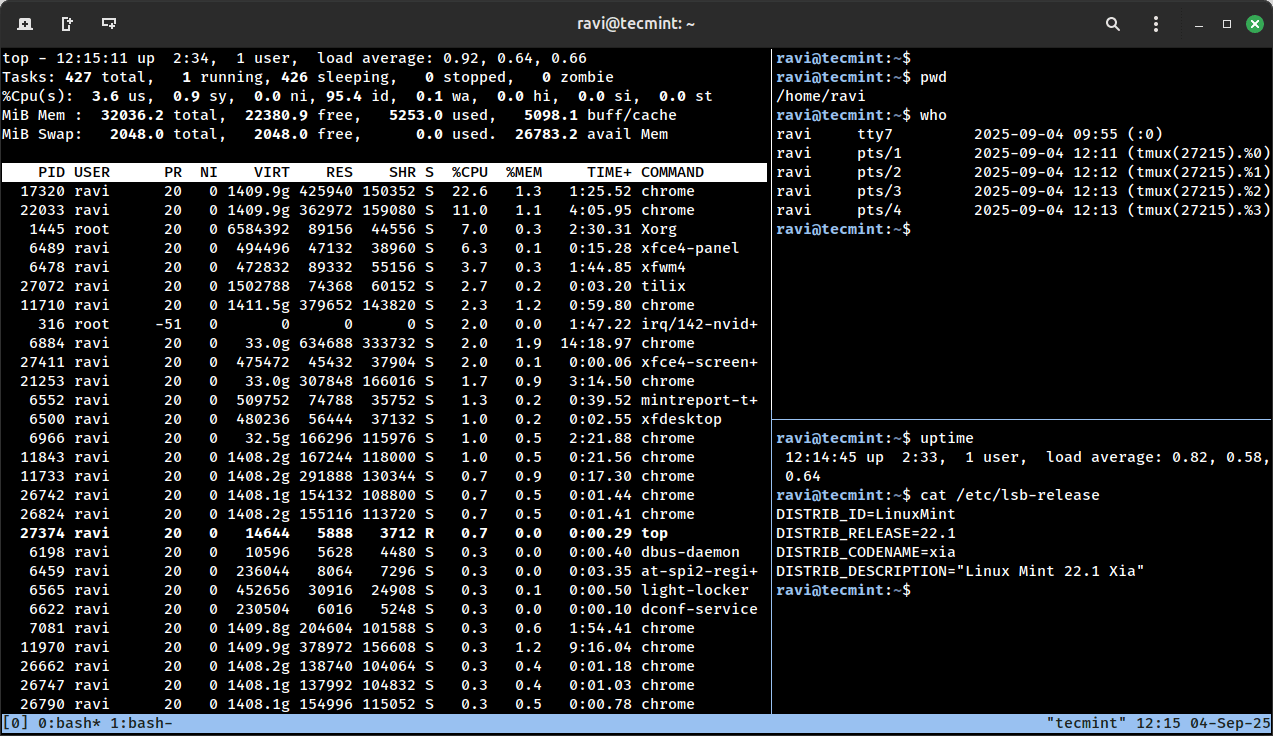
2. Bleachbit
BleachBit is often compared to CCleaner, but in many ways, it goes further and helps you reclaim valuable disk space by removing temporary files, system cache, and other unnecessary clutter that builds up over time.
Beyond just cleaning, BleachBit can also improve the performance of applications like Firefox by clearing stored data, and it includes a secure file-shredding feature to permanently erase sensitive information so it can’t be recovered.
Simple to use yet powerful under the hood, BleachBit is one of those must-have maintenance tools for keeping your Linux system lean and private.
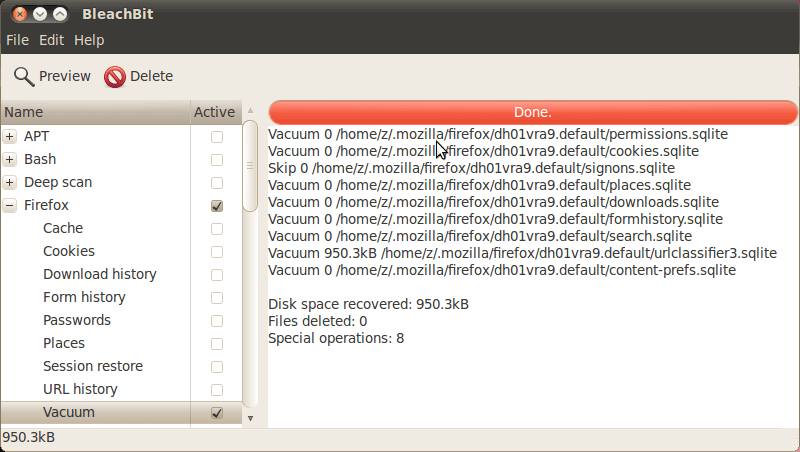
3. KeePass
With so many programs, websites, and services demanding logins these days, it’s almost impossible to remember every password without some help, that’s where KeePass comes in, which is a free, open-source password manager that keeps all your credentials safe and organized in one place.
KeePass stores your passwords inside a single encrypted database, which you unlock with one master key, which means you only need to remember one password to access them all. For security, it uses strong encryption algorithms like AES (Rijndael) and Twofish, so your data stays safe from prying eyes.
If you prefer, you can go a step further and secure your database with a key file instead of or in addition to a master key. Just keep the key file on a USB stick or external drive, and you’ll have an extra layer of protection wherever you go.
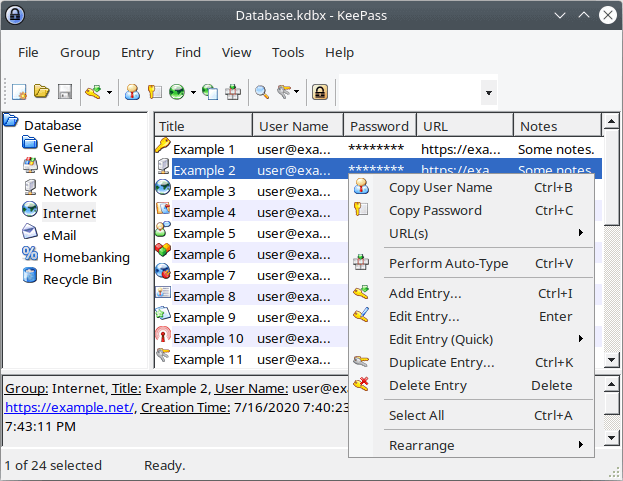
4. PDF Mix Tool
I don’t often edit PDF files, but when I do, I usually use PDF Mix Tool, which is a simple and lightweight open-source program that makes it possible to perform common PDF editing operations, such as file merging and page rotation.
Apart from that, you can also use PDF Mix Tool to generate booklets, delete and add pages to a PDF file, extract pages, and even edit the PDF document information.
This tool is good for basic editing operations. If you need a more complex and powerful program, take a look at the best pdf editors for Linux.
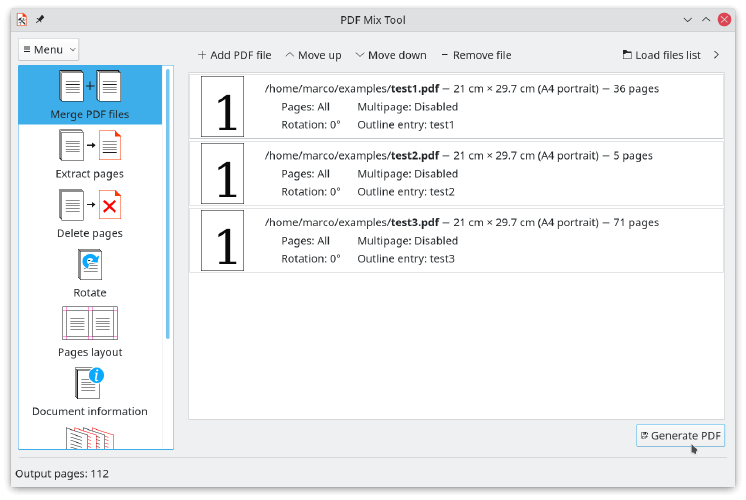
5. Master PDF Editor (Paid)
Master PDF Editor is an easy-to-use PDF editing tool for working with PDF documents that comes with powerful multi-purpose functionality.
It helps you easily add text, create and modify PDFs, insert images, and even encrypt sensitive files for extra security. On top of that, Master PDF lets you merge multiple PDFs into a single document or split one file into several smaller ones, making it handy for both personal and professional use.
While it isn’t fully open-source (the free version has some limitations), many Linux users appreciate it as a practical solution for everyday PDF editing tasks.
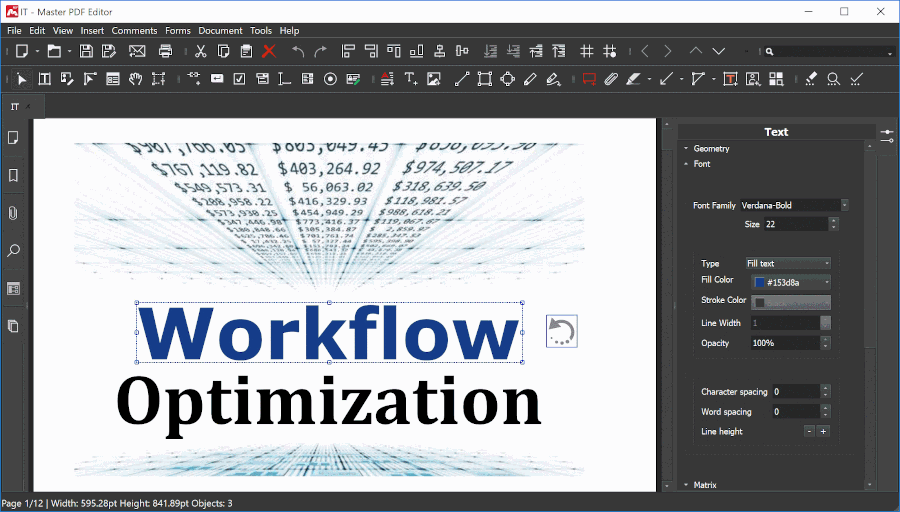
6. LibreOffice Draw
LibreOffice Draw is an application that is inbuilt into the LibreOffice suite that enables you to create anything from an easy sketch to a complex one and provides you the means to communicate with graphics and diagrams. With Draw, you can easily open and edit basic PDF files.
What makes Draw so handy is its flexibility – it’s not just for flowcharts or quick diagrams, but also for creating technical drawings, posters, and even mind maps.
Since it’s part of the LibreOffice suite, it integrates well with Writer, Calc, and Impress, making it a versatile tool for both personal and professional use.
While it doesn’t compete with dedicated graphic design software like Inkscape or GIMP, its ability to handle everyday visual tasks and do light PDF editing makes it a must-have tool that many Linux users overlook.
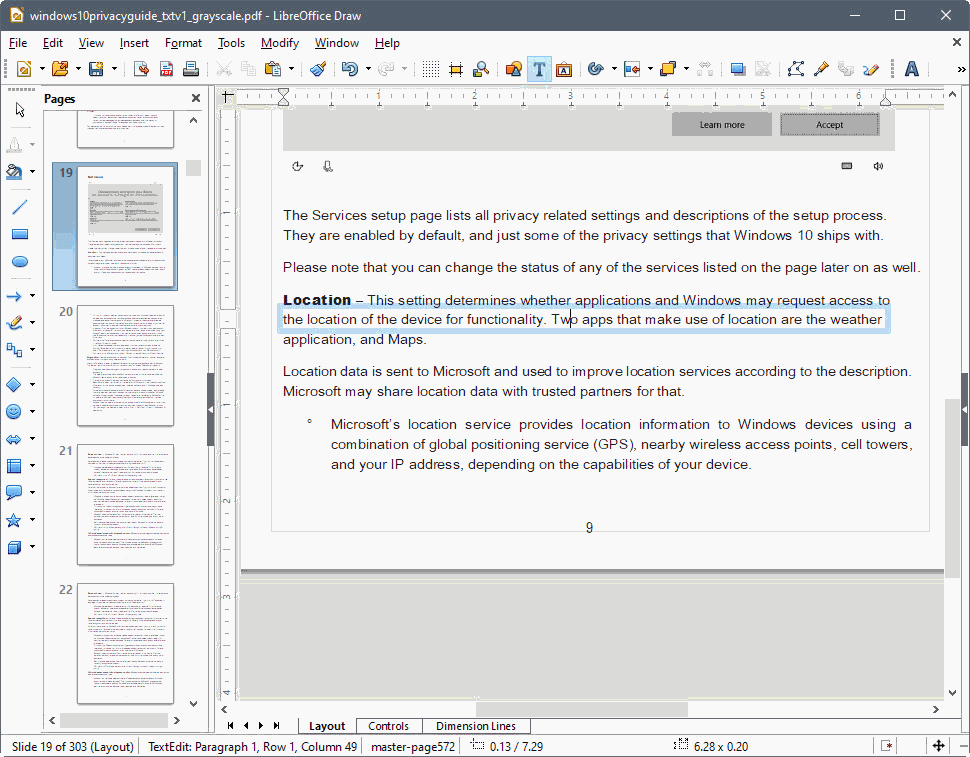
7. Calamares
Calamares is a universal, distribution-independent installer that makes installing Linux fast and painless. Instead of every distro maintaining its own installer from scratch, Calamares provides a flexible, easy-to-customize framework that developers can adapt to their needs.
That’s why you’ll find it powering the installation process in many popular Linux distributions today. Whether you’re setting up a fresh system for personal use or testing multiple distros, Calamares keeps things simple, consistent, and reliable.
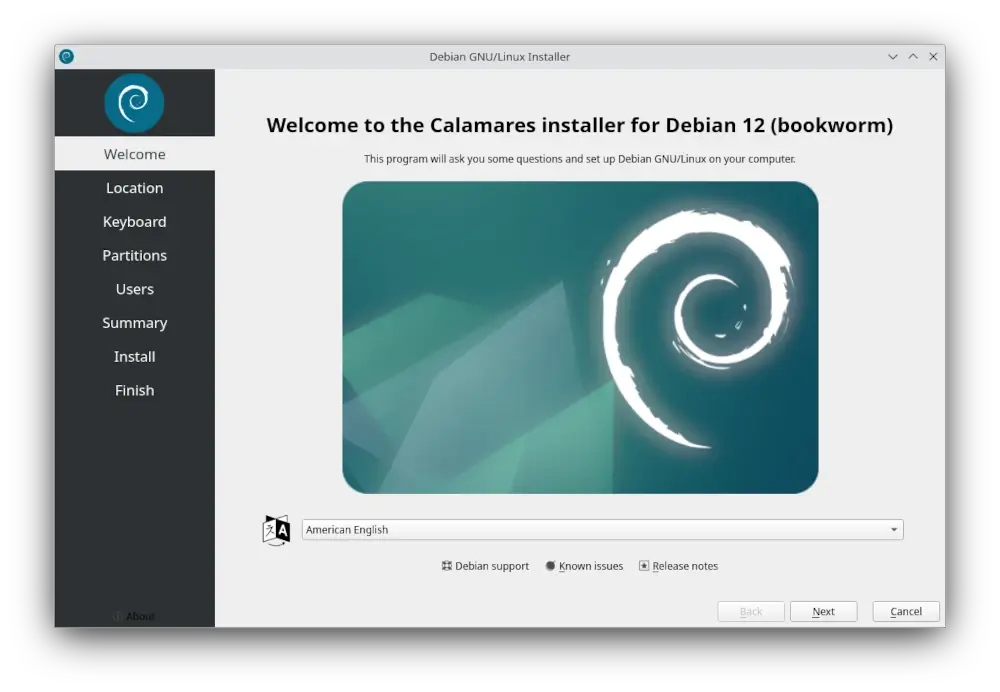
8. Dracut
Dracut is a modern tool for generating the initramfs (initial RAM filesystem) used during the Linux boot process. Unlike older methods that bundled everything into a single static image, Dracut builds the initramfs in a modular way, including only the components your system actually needs to boot.
This makes startup faster, troubleshooting easier, and the whole process more flexible. It’s widely adopted across major Linux distributions and continues to be actively maintained, making it a reliable choice for both desktop and server environments.
9. OSQuery
As its name suggests, OSQuery provides access to real-time system information in the form of tables and events that can be queried using SQL-like syntax via an interactive query console.
With osquery, you can explore your system to perform intrusion detection, diagnose a problem, or just produce a report of its operation – all at your fingertips using a single tool.
If you have at least a basic understanding of SQL, getting details about the operating system using the built-in tables in OSQuery will be a piece of cake. OSQuery runs flawlessly on Windows, macOS, CentOS, and all other Linux OS released since 2011 and requires no dependencies.

Need yet another reason to convince you to give OSQuery a try? It was developed and maintained by the folks at Facebook.
Multimedia & Creativity
From simple screen recorders and audio editors to full-fledged 3D creation suites and professional-grade video editors, these tools prove that Linux isn’t just for servers and terminals — it’s also a powerful platform for creativity.
10. OBS Studio
OBS Studio has become the go-to choice for screen recording and live streaming on Linux, as it is powerful, flexible, and trusted by everyone from casual users to professional streamers.
With OBS, you can record your entire desktop or a specific window, capture audio from multiple sources, and even add overlays, webcam feeds, or transitions to your videos.
What makes it stand out is the balance between ease of use and advanced features. Out of the box, it just works for basic recording, but if you want more control, the plugin system lets you extend its functionality almost endlessly.
Whether you’re creating tutorials, streaming on platforms like Twitch and YouTube, or just recording a quick demo for colleagues, OBS Studio is one of those tools that feels indispensable once you start using it.
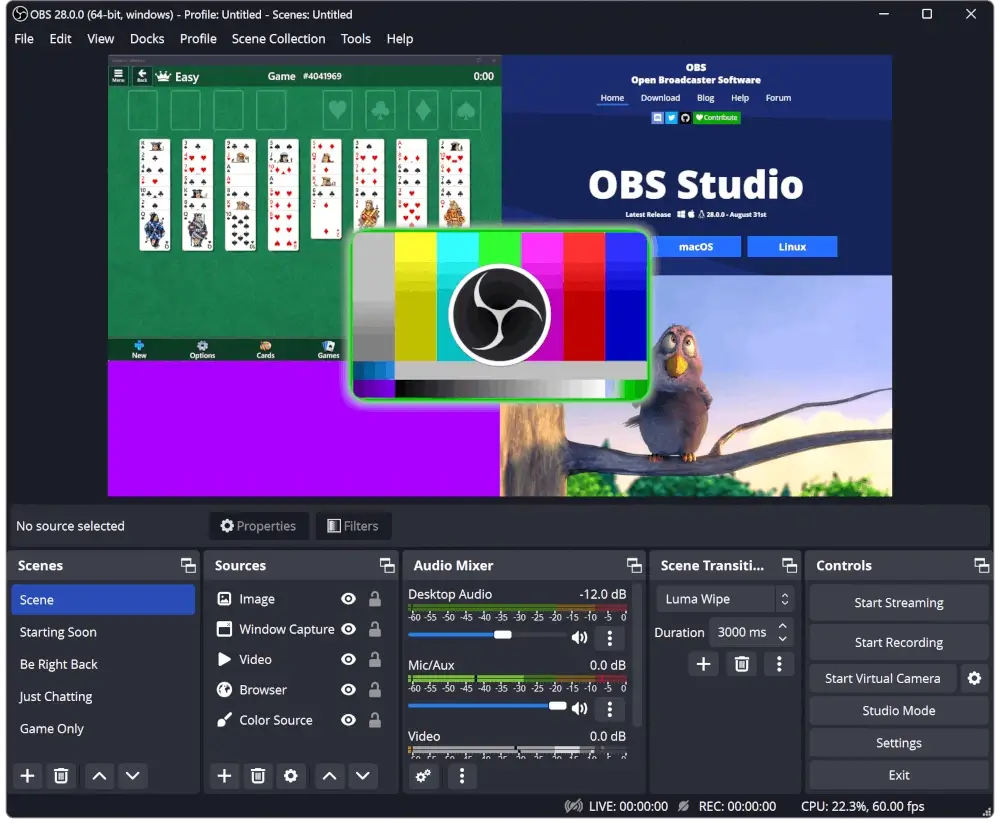
11. Kazam / VokoscreenNG / Peek
Not everyone needs a full-featured recording and streaming suite like OBS Studio, sometimes, you just want something quick, lightweight, and easy to use – and that’s where Kazam, VokoscreenNG, and Peek shine.
- Kazam is perfect for simple screen recordings, whether you’re capturing a tutorial, a bug demo, or just a quick clip to share with teammates.
- VokoscreenNG offers a few more features while still keeping things straightforward, making it a great middle ground for everyday screencasts.
- Peek is designed specifically for creating short animated GIFs of your desktop, which is incredibly handy if you want to demonstrate a step without sending a full video.
Together, these three tools cover a wide range of lightweight recording needs, giving you the right balance of speed, simplicity, and functionality without overloading your system.
12. GIMP
GIMP (GNU Image Manipulation Program) is a multi-platform, free, and open-source photo editing software used for image manipulation and image editing, free-form drawing, transcoding between different image file formats, and more specialized tasks.
In simple terms, GIMP is often seen as the “Photoshop of the Linux world”, which comes packed with powerful tools for retouching photos, creating digital artwork, designing graphics, or even just making quick edits to images.
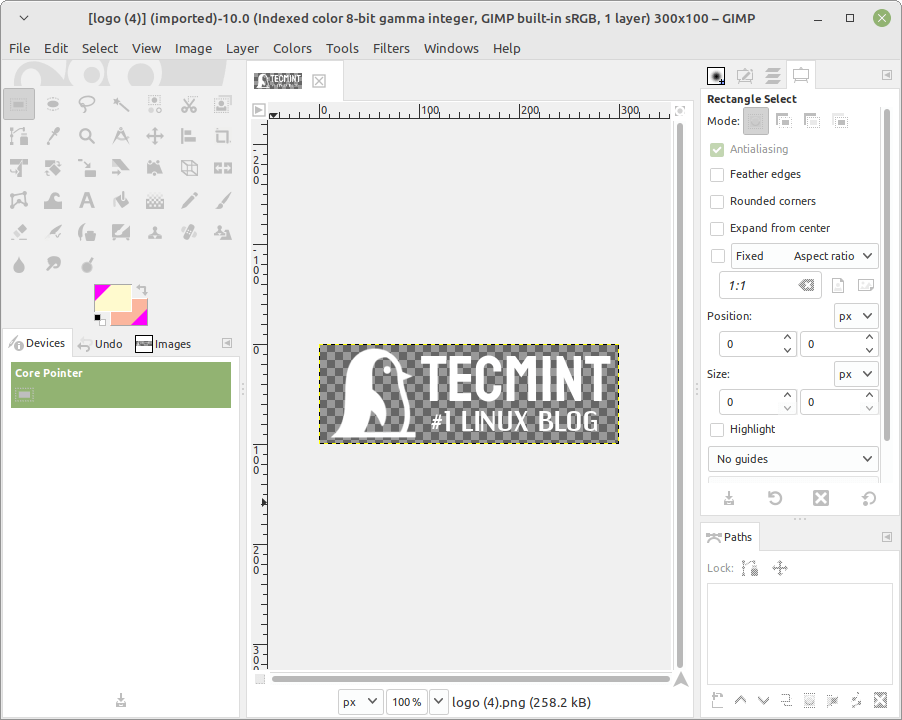
13. Blender
If you are into game development, video editing, or 3D modeling, I am sure you must have already heard about this tool. If you are considering any of these activities either as a hobby or a career change, and haven’t heard about Blender, it is definitely time to check it out.
As a FOSS solution, it does not come short when compared to commercial tools. On top of it, Blender is cross-platform, which means you can not only run it on Linux but also on macOS and Windows.
Among the standard Blender features, you can find rendering, 3D modeling, digital sculpting, video editing, and simulation tools.

14. FreeCAD
FreeCAD is a general-purpose 3D Computer-Aided Design program fit for use in engineering and architecture. Given the fact that FreeCAD is FOSS, it is easily customizable and extensible through the use of Python scripts.
This means you’re not just limited to what comes out of the box, you can adapt it to your specific workflow, automate repetitive tasks, or even build entirely new features.
Whether you’re sketching mechanical parts, experimenting with product prototypes, or drafting architectural models, FreeCAD gives you professional-grade tools without the hefty licensing costs of commercial CAD software.
Its active community and rich library of plugins make it a powerful choice for both hobbyists and professionals who want complete control over their design environment.
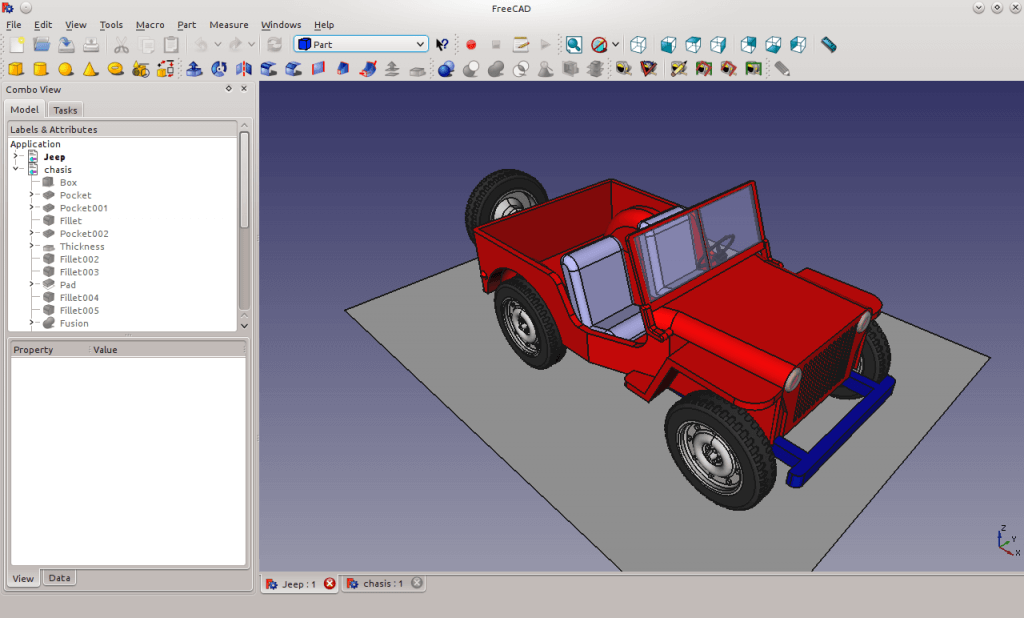
15. Inkscape
Inkscape is one of the most popular open-source tools for creating and editing vector graphics. If you’ve ever worked with designs that need to scale cleanly without losing quality (like logos, icons, or illustrations), this is the tool you’ll want in your toolkit.
It supports the standard SVG format along with many others, making it highly versatile for both personal and professional design work. Despite being powerful, it remains approachable for beginners and is backed by a strong community that offers tutorials, extensions, and plugins to extend its functionality even further.
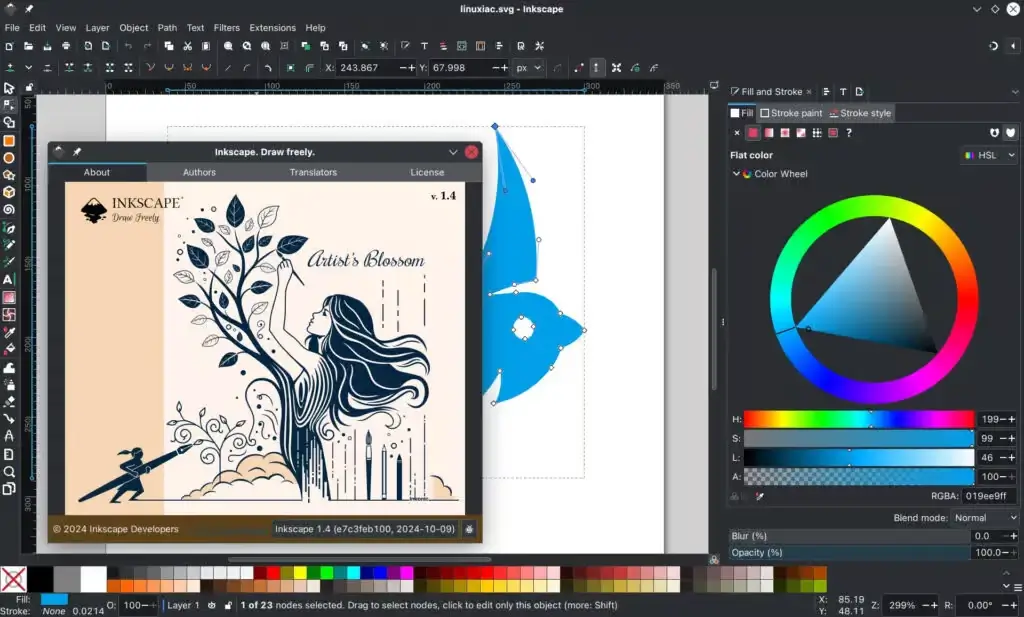
16. OpenShot
OpenShot is a FOSS video editor for Linux that can help you create “the film you have always dreamed of” (in the words of its developers) with your home videos, pictures, and music files. It also allows you to add subtitles, transition effects, and export the resulting video file to DVD and many other common formats.
On top of that, OpenShot is designed with simplicity in mind, so even beginners can get started quickly without being overwhelmed by advanced features. At the same time, it doesn’t compromise on power — you’ll find support for unlimited tracks, 3D animations, keyframe-based effects, and real-time previews, which makes it flexible enough for more complex projects.
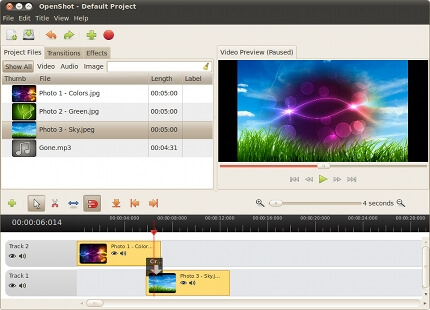
17. Shotcut
Shotcut is one of the best free and open-source video editors available for Linux today. Unlike some simpler tools, it offers a professional set of features while still being approachable for beginners. You get support for a wide range of video and audio formats, multi-track timeline editing, and advanced tools like color grading, keyframing, transitions, and filters.
What makes Shotcut stand out is that it doesn’t lock you into any proprietary ecosystem — everything is open-source and cross-platform. Whether you’re trimming home videos, editing tutorials, or working on a larger creative project, Shotcut gives you the flexibility to do it all without leaving the Linux world.
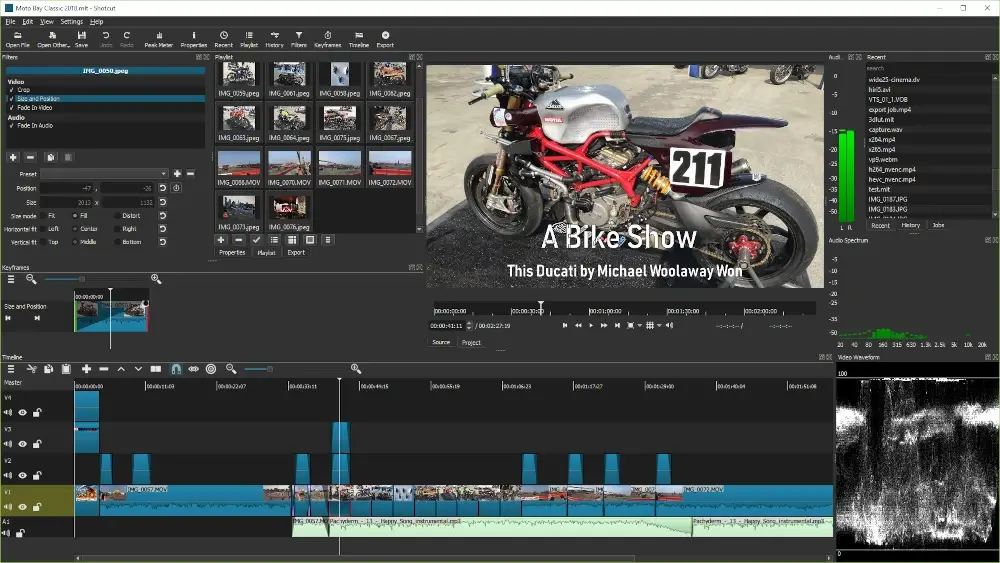
18. DVDStyler
DVDStyler is a cross-platform, FOSS DVD authoring tool that allows you to create nice-looking and professional DVDs with your video and image files.
As such, DVDStyler allows you to create your own interactive menus or choose from the built-in ones, add subtitles and audio files, and use video files in different formats. Additionally, you can create photo slideshows and place graphic objects like buttons, text, images, and so on.
In addition, this awesome tool integrates with your DVD burner to burn the disk from within the same application.
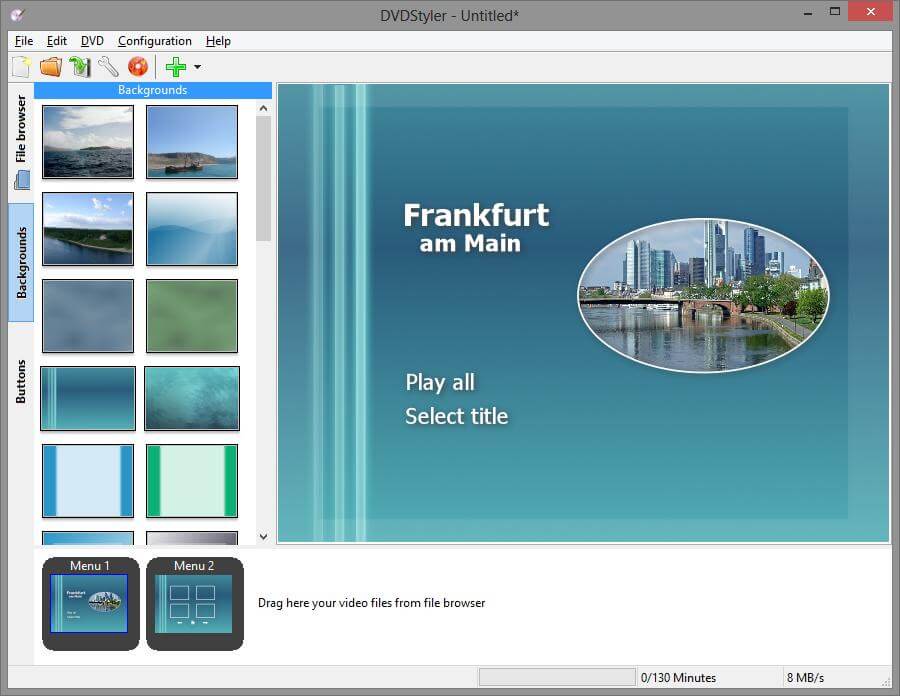
19. VLC Media Player
VLC Media Player is the go-to choice for anyone who wants a reliable, lightweight, and versatile media player that supports virtually every audio and video format out there without needing extra codecs, and it can handle DVDs, network streams, and even 360° videos with ease.
Beyond playback, it also includes features like media conversion, basic editing, and the ability to stream content across your network – all wrapped in a simple interface that “just works”.

20. Audacity
Audacity is an easy-to-use, multi-track audio editor and recorder for podcasters, musicians, and hobbyists who need a reliable tool to record, cut, and mix audio.
With support for plugins, effects, and a wide range of file formats, Audacity makes it simple to clean up recordings, add layers of sound, or produce professional-quality audio projects – all without the need for expensive proprietary software.
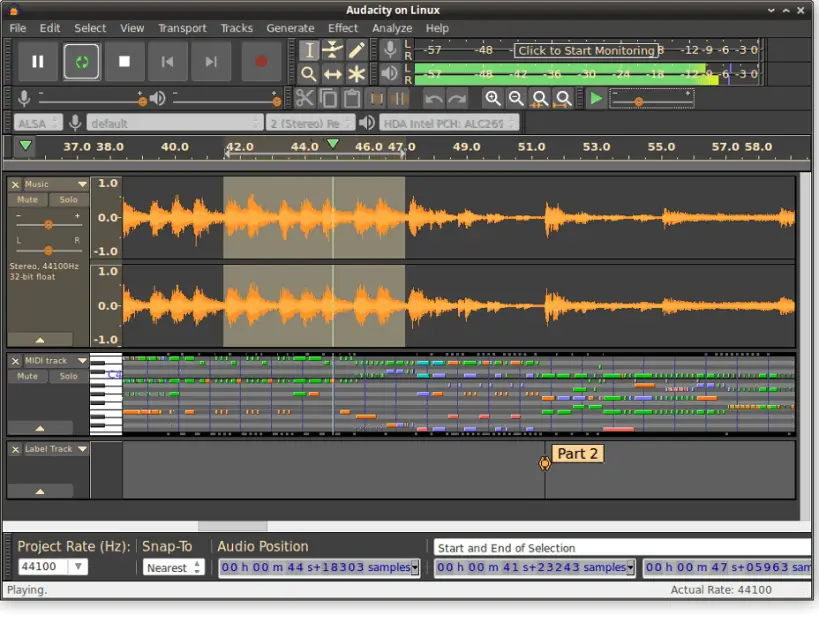
21. TuxGuitar
If you’re like me and music (especially the guitar) is one of your passions, you’ll love this TuxGuitar program, which will let you edit and play guitar tablatures like a pro.
With TuxGuitar, you can compose your own songs, practice along with built-in playback, and even import or export Guitar Pro files. It supports multiple tracks, effects, time signatures, and a wide range of instruments, making it more than just a tablature editor.
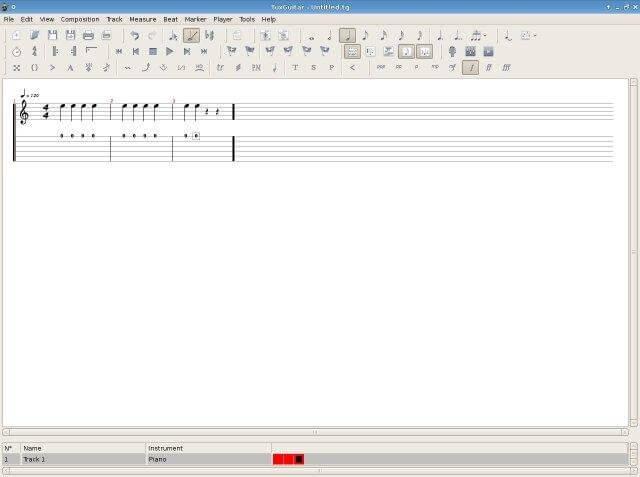
22. MuseScore
MuseScore is an open-source and free professional music notation application that is used to create, play, and print beautiful sheet music using an easy-to-use, yet powerful interface.
It supports a wide range of instruments, playback features, and export options, making it suitable for both simple practice pieces and full orchestral arrangements. The active community also shares thousands of free scores online, so you can study, play along, or get inspired by the work of others.
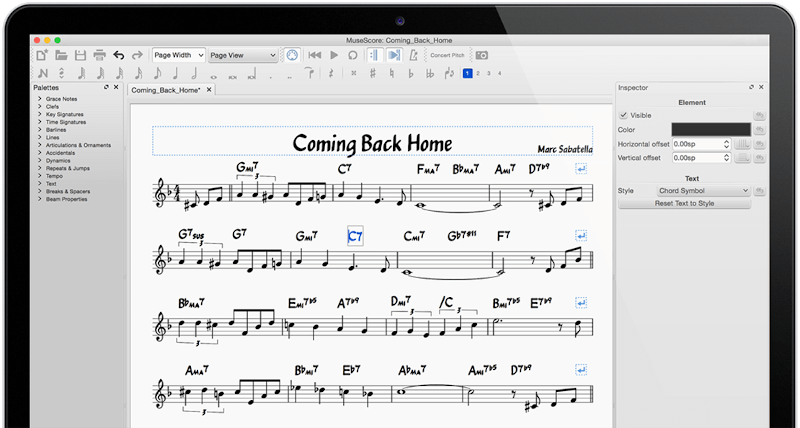
23. Celestia
Because even system administrators and developers need a little distraction, you can use Celestia (a free 3D astronomy program) to navigate the universe.
Celestia serves as a 3D planetarium that seamlessly simulates various celestial objects whose position and movement are calculated accurately in real-time. It also comes with a large database of stars, galaxies, planets, asteroids, comets, and other celestial bodies.
As opposed to other planetarium software, Celestia allows you to travel throughout the solar system and the galaxy, not just the surface of the Earth. To infinity and beyond!

24. FlightGear
FlightGear is an awesome open-source flight simulator that goes far beyond just being a game. It provides a fully open and realistic flight simulation environment that can be used for experiments, academic research, pilot training, or industrial engineering projects.
It’s also perfect for DIY enthusiasts who enjoy building and experimenting with their own flight designs. And, of course, it’s incredibly fun and challenging as a desktop flight simulator on Linux, offering hours of practical and exciting aviation experiences.

Developer Tools
From versatile code editors to browser-based IDEs and powerful GUI toolkits, these programs help you write, test, and deploy code more efficiently.
25. Visual Studio Code
Visual Studio Code is a free source code editor developed by Microsoft that has reached a significant level of popularity among web and cloud developers who are also Linux users since it provides a nice programming environment out of the box that supports extensions to add functionality.
What makes it especially appealing is its flexibility, where you can customize it to fit almost any programming workflow, add themes, integrate with Git, debug code, and even run terminal commands directly inside the editor.
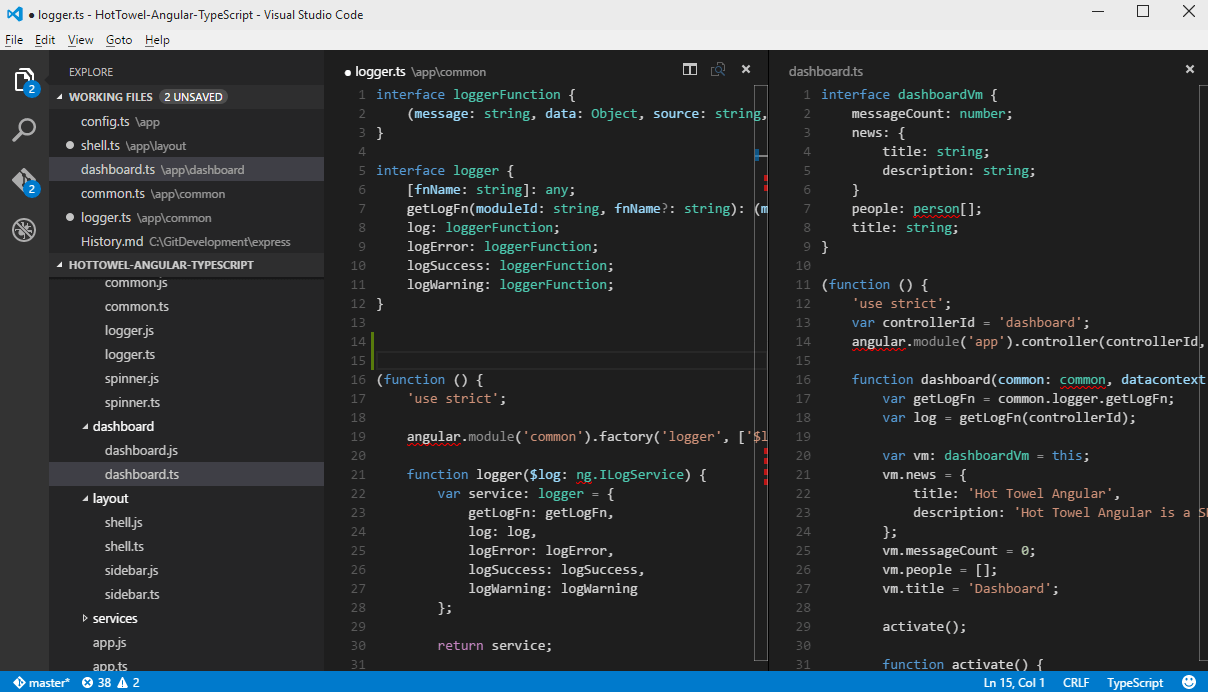
26. CodeMirror
CodeMirror is a highly versatile JavaScript-based text editor that runs directly in your web browser, which comes with syntax highlighting for over 100 programming languages and offers a robust API that makes it easy to customize and extend.
If you manage a website, blog, or online coding platform that provides programming tutorials, CodeMirror can be an invaluable tool, making code examples interactive, readable, and easier for your audience to follow.
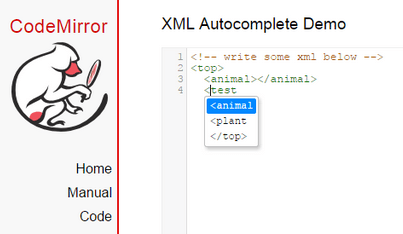
27. Fyne
Fyne is a modern, open-source GUI toolkit for the Go programming language that lets you build cross-platform desktop and mobile applications with ease.
Whether you’re creating a simple utility or a full-featured app, Fyne provides a clean and consistent interface, making it easier for developers to focus on functionality without worrying about complex platform-specific quirks.
Its active community and continuous updates ensure that it stays relevant and reliable for Linux users and developers alike.

28. Gemini CLI
Gemini CLI is a free, open-source command-line tool that brings the power of Google’s Gemini AI directly into your terminal for a wide range of tasks: writing or debugging code, generating documentation, automating repetitive tasks, or even creating content — all without leaving your shell.
What makes it truly exciting is how it integrates seamlessly into your workflow: no heavy GUI, no distractions, just pure productivity right from the terminal.
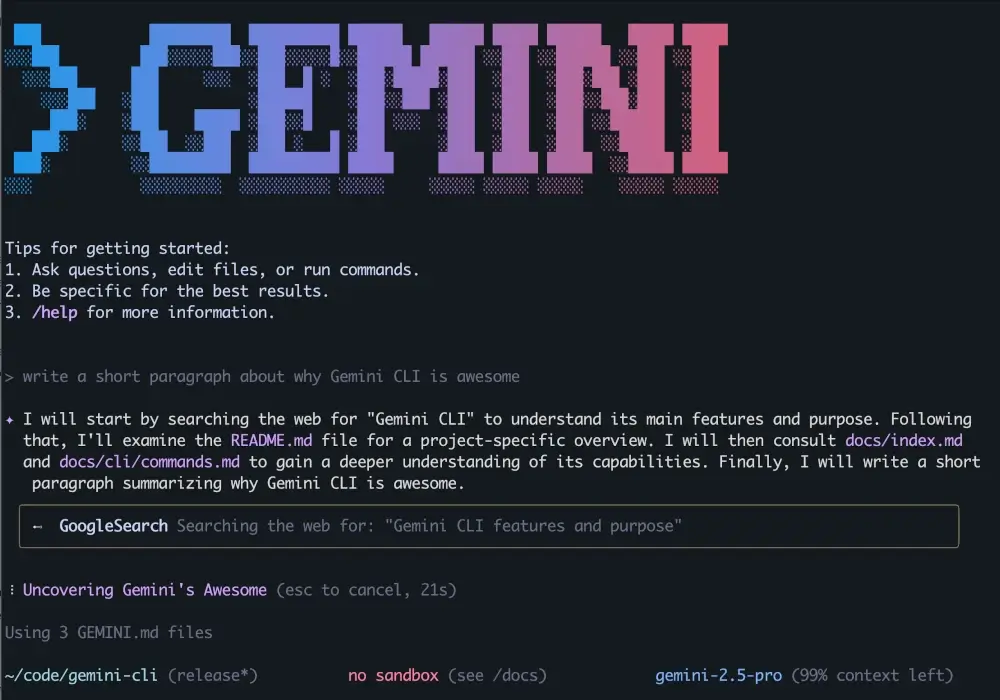
Networking, Security & Monitoring
From secure remote access and encrypted communications to network monitoring and intrusion detection, this category covers the software that protects your data, simplifies administration, and gives you peace of mind.
29. Jitsi
Jitsi is a free and open-source audio/video conferencing and instant messaging platform for Windows, Linux, macOS, iOS, and Android.
It provides complete encryption with support for protocols such as SIP, XMPP/Jabber, AIM/ICQ, IRC, Windows Live Messenger, Yahoo!, Google Hangouts extensions, as well as OTR, ZRTP, etc.

30. qBittorrent
qBittorrent is a free and open-source BitTorrent client that helps users to download and share files over the network in a decentralized manner.
It allows users to connect to peers and seeders to download and upload files efficiently by connecting to a swarm of other users who are sharing the same file. It uses the BitTorrent protocol, which breaks files into smaller parts and allows users to download those parts from multiple sources simultaneously.

31. FreeRDP
If your system administration tasks include managing Windows servers via Remote Desktop Protocol (RDP), FreeRDP is a tool that you will want to try out.
It is described by its developers as an RDP client for Windows Terminal Services. The project is hosted on GitHub and released under the Apache license, so you are welcome to collaborate with it if you wish.
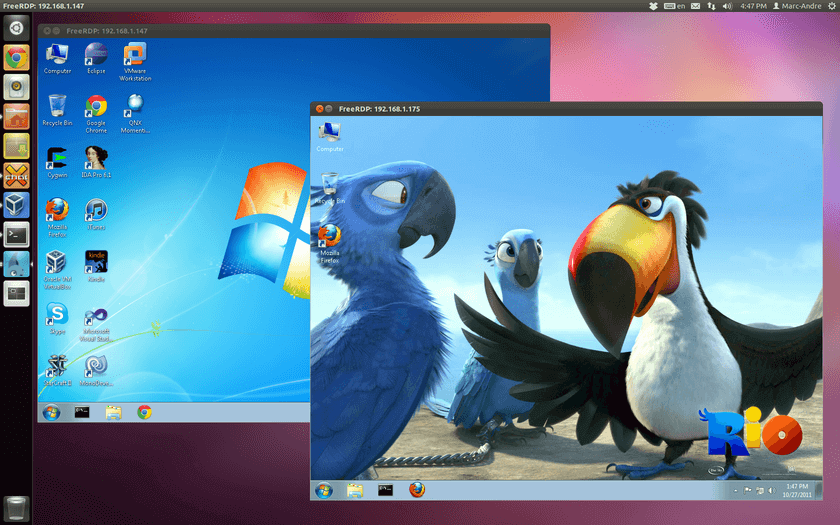
32. Security Onion
Security Onion is a Linux distribution designed specifically for network security monitoring, intrusion detection, and threat hunting for a small business network, or a large enterprise.
It comes preloaded with powerful open-source tools for capturing network traffic, analyzing logs, and visualizing alerts, all in a single platform. What makes it particularly useful is that it’s fully open-source and regularly updated, so you can build a professional-grade security setup without relying on expensive commercial solutions.
For anyone interested in security, system monitoring, or learning more about real-world cyber threats, Security Onion is an invaluable addition to your Linux toolbox.
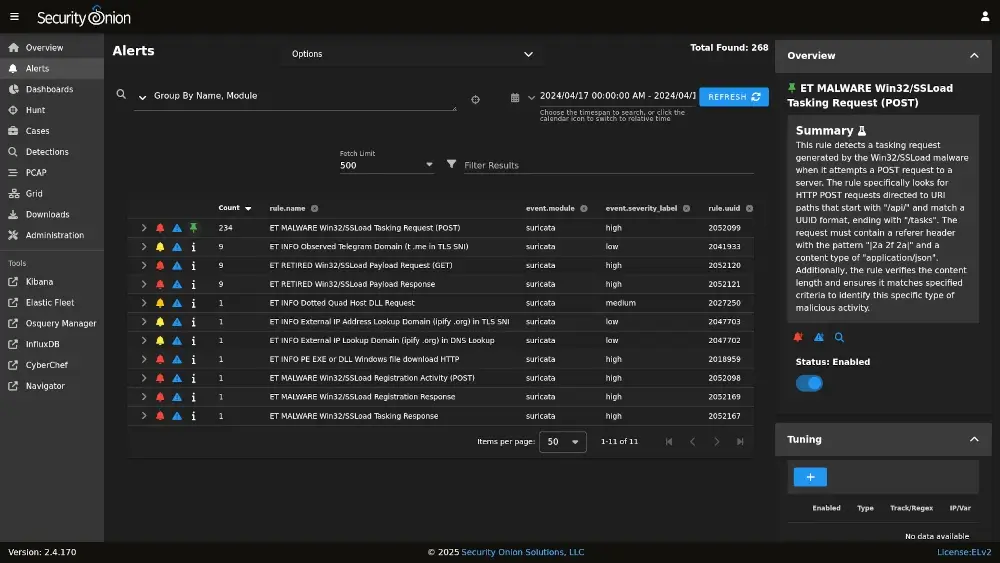
33. OpenNMS
If you manage a network with multiple devices, servers, or services, OpenNMS is a lifesaver, as it is a free and open-source enterprise-grade network monitoring platform that helps you keep track of everything from uptime and performance to network health and alerts.
What I love about it is that it scales beautifully for monitoring a handful of servers or a massive infrastructure. OpenNMS adapts without breaking a sweat. It also supports automated discovery, performance data collection, and customizable alerts, which means you can proactively prevent issues before they impact users.
For anyone running medium to large networks, this tool is like having a full-time network operations team built into your Linux environment.
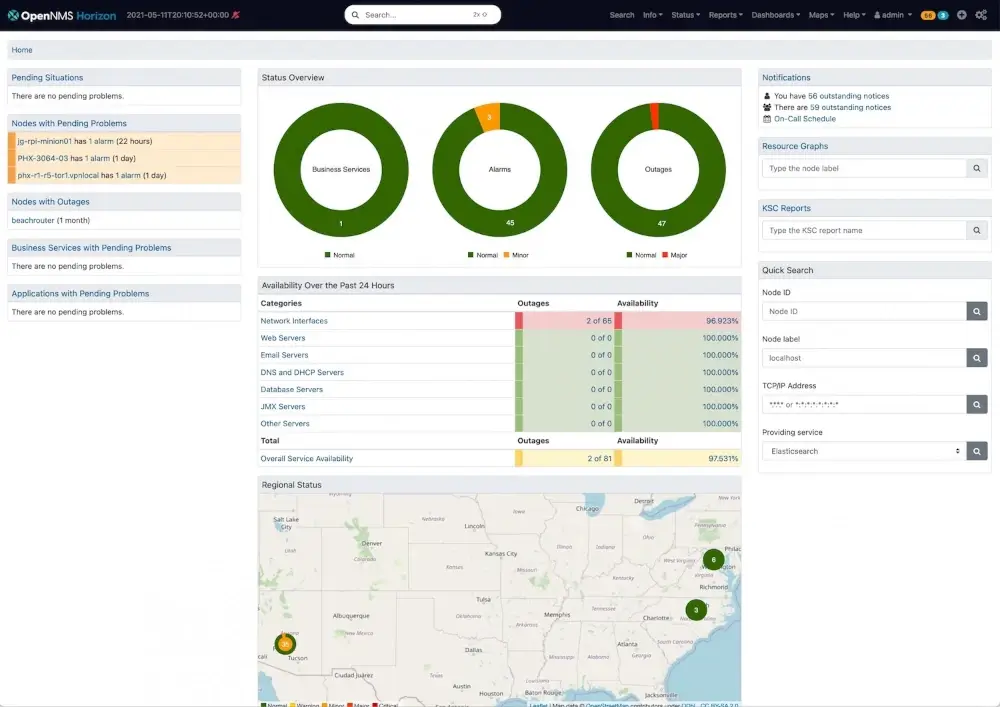
34. OCS Inventory NG
Open Computer and Software Inventory Next Generation, or OCS Inventory NG for short, is a lightweight web application that can help network and system administrators to keep track of 1) all the devices connected to the network, and 2) machine configuration and software installed in them.
The project’s website (listed below) has a fully functional demo in case you want to check it out before attempting to actually install the program. In addition, OCS Inventory NG relies on well-known technologies like Apache and MySQL / MariaDB, making it a robust program.
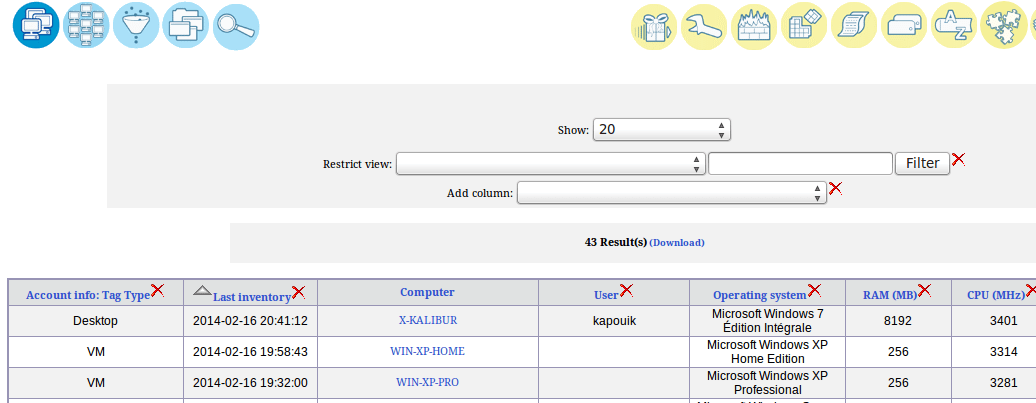
35. GLPI
Often used alongside OCS Inventory NG, GLPI is a powerful, multilingual IT asset management tool that helps you keep a complete inventory of your network devices and systems.
Beyond simply cataloging hardware and software, GLPI also comes with a built-in job tracking system, complete with email notifications to keep your team updated on tasks and issues.
Some of its standout features include:
- Track all past maintenance or support actions for any device.
- Manage and validate solutions for IT issues efficiently.
- Gather feedback from users to improve IT services.
- Easily generate reports in PDF, spreadsheet, or image formats for analysis or sharing.
We’ve previously covered the installation process in detail here: Install GLPI IT and Asset Management Tool in Linux, so you can get started quickly without missing a step.
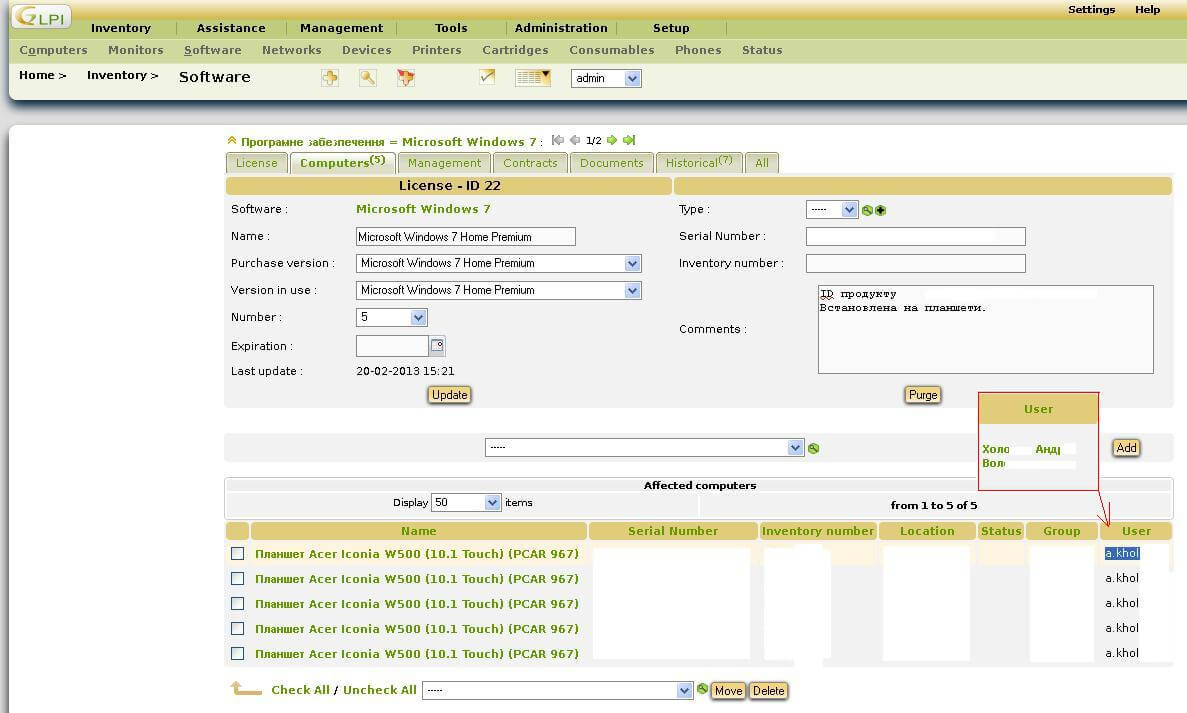
Cloud & Storage
From self-hosted solutions like Nextcloud to encrypted storage services like Internxt, and media streaming with Ampache, this category ensures that your files are always accessible, organized, and under your control.
36. NextCloud
Described as “a safe home for all your data”, NextCloud was started as a separate project by one of its ownCloud’s first collaborators.
Although it raised a few sparks between him and the ownCloud community, NextCloud seems to be here to stay and compete with ownCloud as a private cloud solution to access and share your files, calendars, contacts, and office documents.
Using dozens of third-party apps available on the official App Store, you can equip your Nexcloud instance with new features and turn it into a powerful collaborative environment that cares with respect to your personal data.
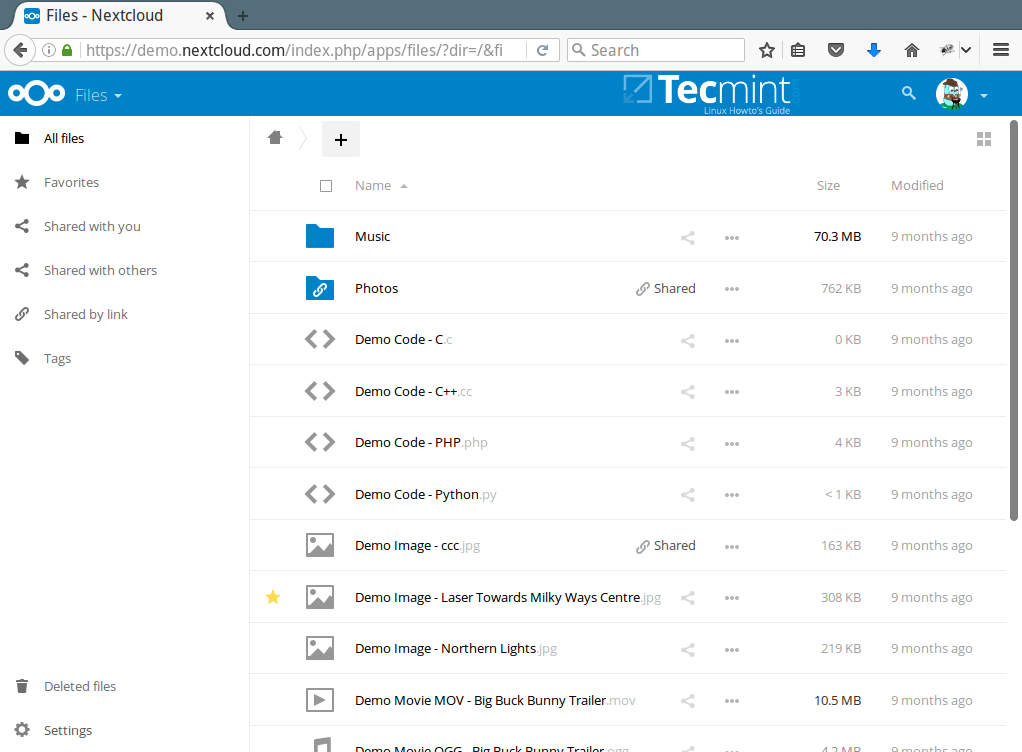
37. Owncloud
Although not a new kid on the block in any way, I chose to include OwnCloud in this review due to its importance. As an alternative to commercial Dropbox, security and privacy are achieved without much hassle, and allow you to easily set up a customized cloud storage and file-sharing solution.
We already covered the installation of Owncloud in-depth here: Create Personal/Private Cloud Storage Solution in Linux
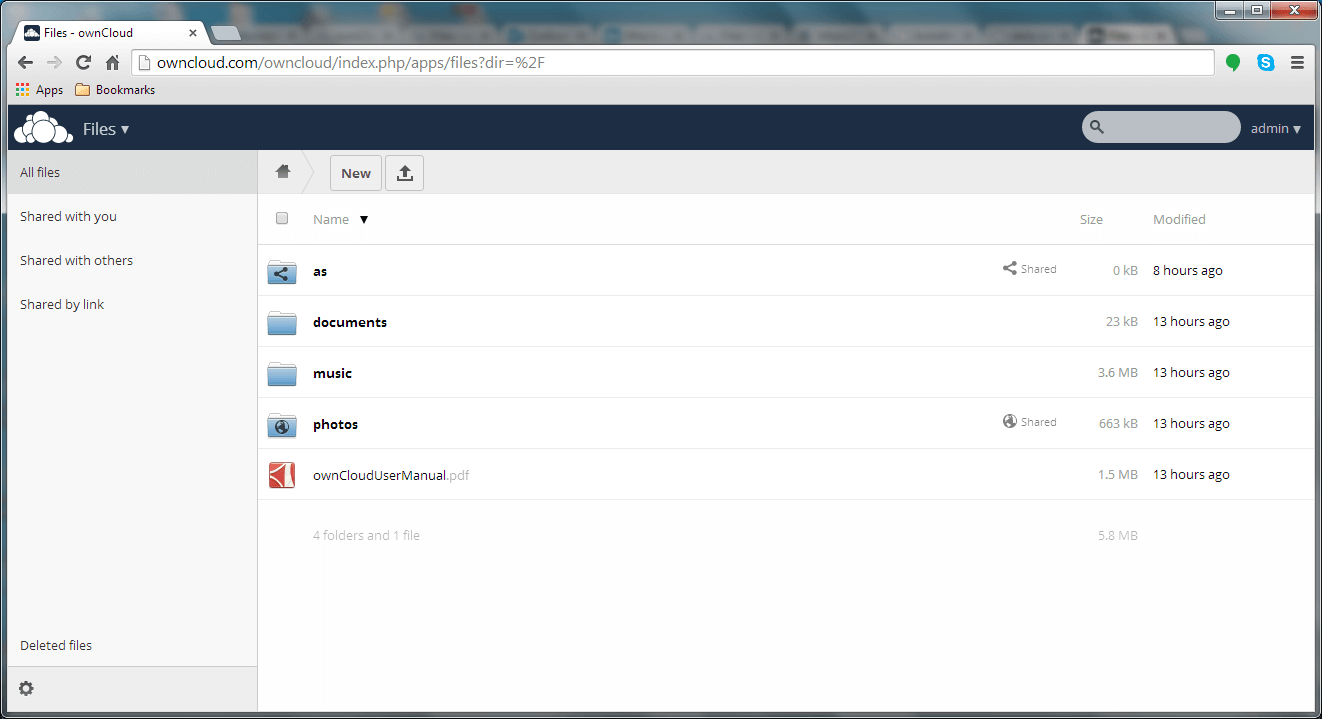
38. Internxt – Secure Cloud Storage
Internxt is a secure cloud storage solution built using open-source software. Internxt Drive is a free and private cloud storage platform that allows users to share and collaborate on files securely.
Internxt guarantees file security with end-to-end encryption. For maximum security, it encrypts your files directly on your device before they are transmitted to the internet, and you can share and collaborate with teams using advanced file-sharing features.
All tecmint readers can get 70% off on all Internxt lifetime plans. However, the company often has higher sales onsite that you can keep an eye on.
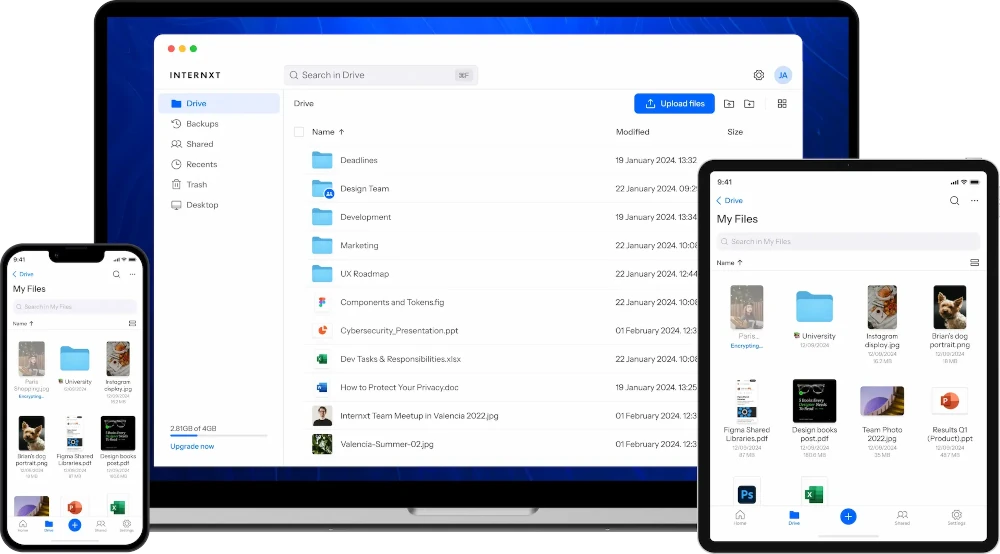
39. Ampache
With Ampache, you can set up your own home media center or online audio and video streaming application and access it from anywhere with an Internet connection.
Although it is designed as a personal application, Ampache allows for public registration if an administrator chooses to enable that feature.
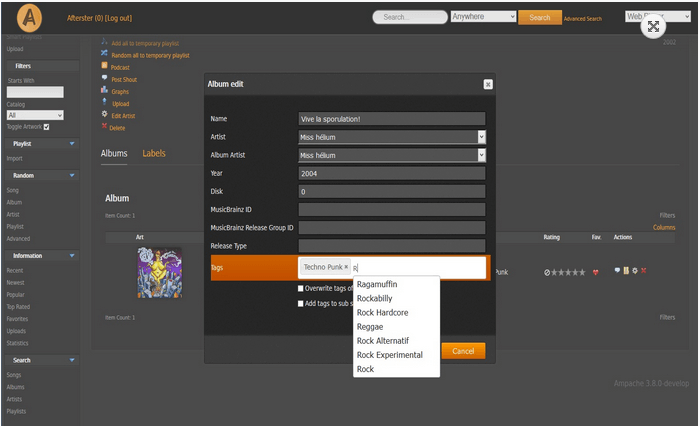
Productivity & Office
From full office suites that rival Microsoft Office to lightweight to-do managers and email clients, this collection of software helps you handle professional work, personal projects, and everything in between — all without leaving the open-source ecosystem.
40. ONLYOFFICE
Many Linux users have been lacking a decent Microsoft Office alternative for years. From my point of view, one of the best replacements for the MS Office suite is ONLYOFFICE, an open-source project that revolves around office software and productivity tools.
ONLYOFFICE offers a self-hosted office suite called Docs and a free desktop editor for Linux, Windows, and macOS. Both online and desktop editors are based on the same engine and allow you to create and collaborate on documents, presentations, spreadsheets, and fillable forms in real-time.
The ONLYOFFICE suite is fully compatible with DOCX, XLXS, and PPTX files and also makes it possible to open and view PDF and DjVu files. Conversion to DOCX is available, too.
ONLYOFFICE comes with integration apps for the most popular file-sharing and document management platforms, so you can embed the online editors to enable document editing and real-time co-authoring within Nextcloud, ownCloud, Moodle, WordPress, Seafile, etc.
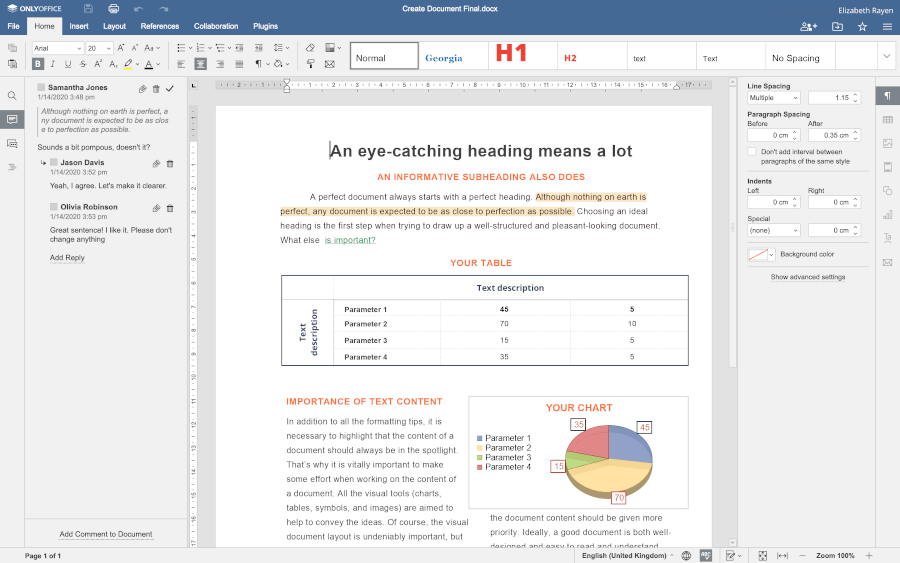
41. Thunderbird
Thunderbird is an open-source email client that brings all your messages, calendars, and contacts into a single, easy-to-use interface.
It supports all the popular email services like Gmail, Outlook, and Yahoo, while giving you powerful features like message filtering, search, and encryption. For Linux users, it’s a reliable, well-maintained alternative to commercial email clients that just works out of the box.
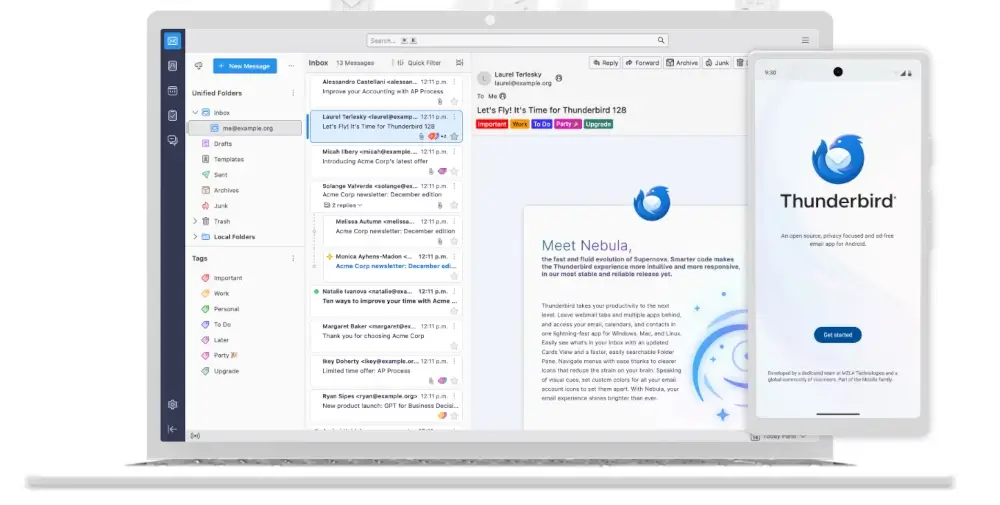
42. Mailspring
When it comes to email management, one of my favorite tools is Mailspring, which is an open-source and cross-platform email client that allows you to create a single inbox for all your email accounts.
Mailspring is compatible with all popular email providers, including Gmail, Outlook, iCloud, Office 365, Yahoo!, etc., and supports IMAP/SMTP.
The Mailspring user interface is visually pleasing and there are a few beautiful themes. It also comes with a signature editor that allows you to create custom signatures, even with images and links to social media, which looks great.

43. OpenTodoList
If you work on several projects and have a lot of tasks to do at a time, you definitely need to try OpenTodoList, which is a simple note-taking application that allows you to stay organized.
With this tool, your information is organized in libraries. A library can contain to-do lists, notes, and images that are stored locally.
More importantly, you can synchronize your information with NextCloud, ownCloud, other WebDAV services, or any third-party synchronization tool of your choice. OpenTodoList lets you keep track of your tasks and enhance your productivity in a simple way.
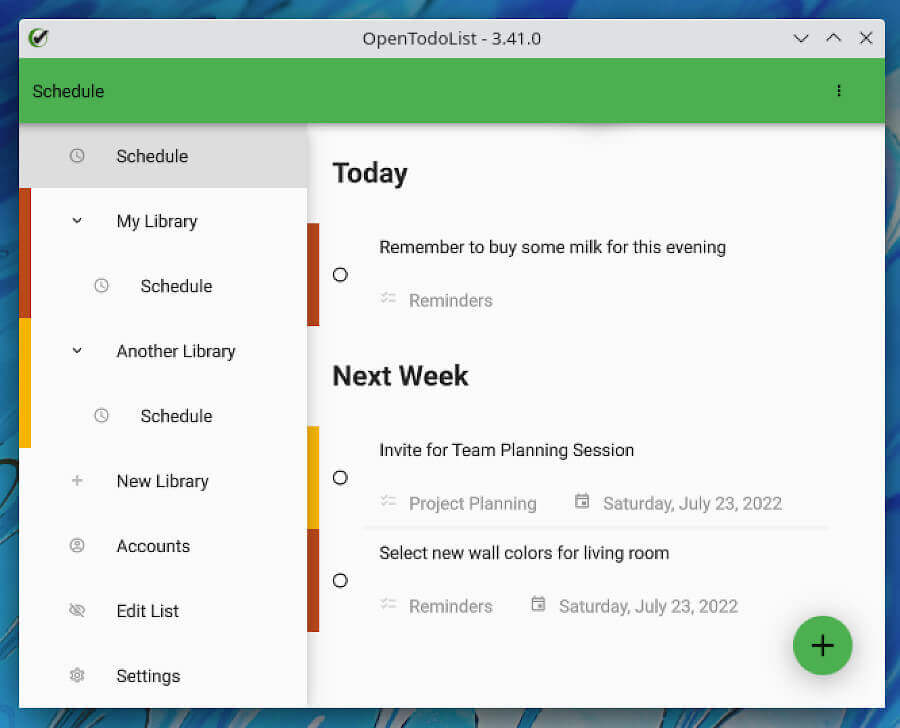
44. GNUCash
If you have been using a spreadsheet to keep track of your personal, family, or business finances, it may be time to try a more suitable solution, such as GNUCash.
This FOSS accounting software allows you to keep an eye on your bank accounts, expenses, and income, and to create custom, complete reports with this data. Its user-friendly interface is a plus to the solid accounting principles GNUCash uses under the hood.
The official website includes an exhaustive FAQ section, the application Manual, and a Tutorial guide. With these materials, learning how to use GNUCash will be a play in the park. On top of that, you can subscribe to the mailing lists in case you need help or run into any problems with GNUCash.
Like many other open-source projects, GnuCash is entirely developed, maintained, and translated by volunteers and enthusiasts.

45. LogicalDOC
Both available as Enterprise (paid) and Community editions, LogicalDOC is an award-winning, web-based Document Management System (DMS). As such, it aims to provide a high-quality method for sharing business documents and records in a low-cost and secure way.
Additionally, LogicalDOC allows you to control access to these resources via security roles, and to easily track changes through version control. LogicalDOC can be installed both on a single computer in standalone mode, on a dedicated server as a shared service, or as a Software as a Service (SaaS) solution.
LogicalDOC comes with features for content processing and information management that are more suitable for enterprises and businesses, but it’s also great for personal use.

46. Jaspersoft Studio
Jaspersoft Studio is a report designer program that allows you to create simple and sophisticated reports, as well as charts, tabs, tables (and everything you can expect to see in a world-class report), and export them to a wide variety of formats (with PDF perhaps being the most common).
With Q&A forums and User groups, plus several samples and examples, the community website is a great resource for help to master this versatile program.
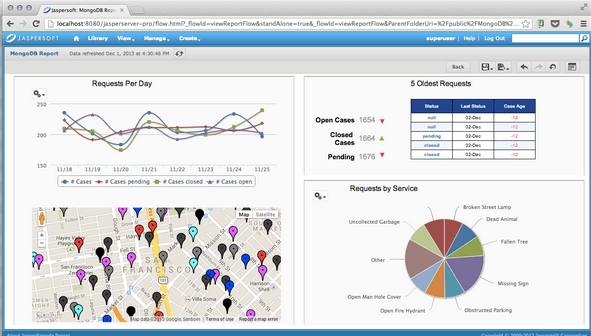
47. GNU Health
GNU Health is a free, extremely scalable Health and Hospital Information Platform, which is used by health professionals across the world to enhance the lives of the underprivileged, offering a free technique that optimizes health promotion and disease prevention.
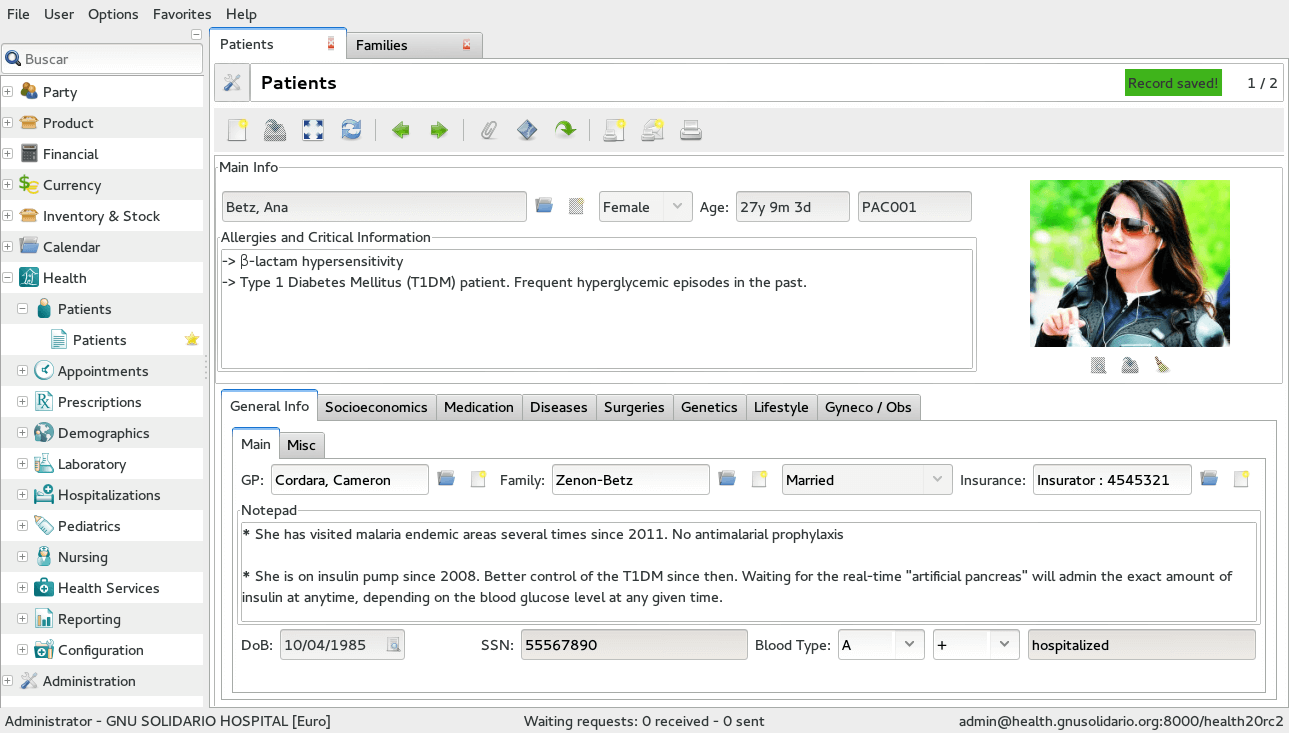
48. Cherrytree
Cherrytree is a free and open-source hierarchical note-taking program that comes with rich text formatting, syntax highlighting, and advanced customization options. Its advanced search feature enables you to search files across the file tree irrespective of their path.
It comes with keyboard shortcuts, importing and exporting notes, syncing with cloud platforms like Dropbox, and password security to keep your notes secure.
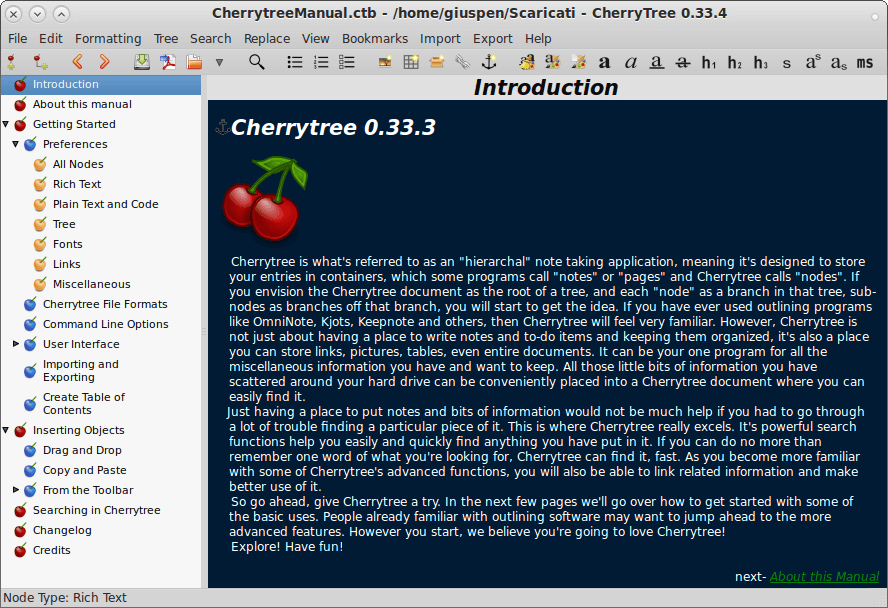
Databases & Backend
From flexible document-oriented databases to high-performance computing toolkits, these programs give you the building blocks to power applications, handle large datasets, and maintain backend infrastructure without relying on proprietary solutions.
49. DocumentDB
If you’re a developer or someone who manages data regularly, DocumentDB is an open-source database that combines the flexibility of NoSQL with the reliability of PostgreSQL, letting you store and query documents without giving up structure or consistency.
Whether you’re building web applications, handling JSON data, or experimenting with modern database designs, DocumentDB provides a robust, scalable, and fully open-source solution that fits naturally into any Linux environment.
I’ve found it especially handy when I need a database that’s versatile, fast, and doesn’t lock me into proprietary systems.
50. OpenHPC
OpenHPC is a collection of open-source tools and libraries that make it easier to build and manage high-performance computing (HPC) clusters on Linux.
OpenHPC provides pre-packaged software stacks, configuration tools, and best practices so you don’t have to start from scratch. It’s designed to save time, reduce setup headaches, and make HPC more accessible for both organizations and enthusiasts who want to experiment with cluster computing on Linux.
Project Management & Collaboration
From running your own wiki and tracking bugs to managing tasks and point-of-sale systems, these programs help you coordinate work, share information, and collaborate efficiently.
51. MediaWiki
MediaWiki is a program for creating and managing a Wikipedia-like website (in fact, Wikipedia itself is based on MediaWiki) where a community can add, remove, update, and revert entries, and authors are notified of such changes.
What makes it truly powerful is its ability to handle large amounts of content collaboratively, with detailed version control so you can track every edit. It’s highly customizable through extensions and templates, allowing you to create anything from a simple knowledge base to a fully-featured encyclopedia.
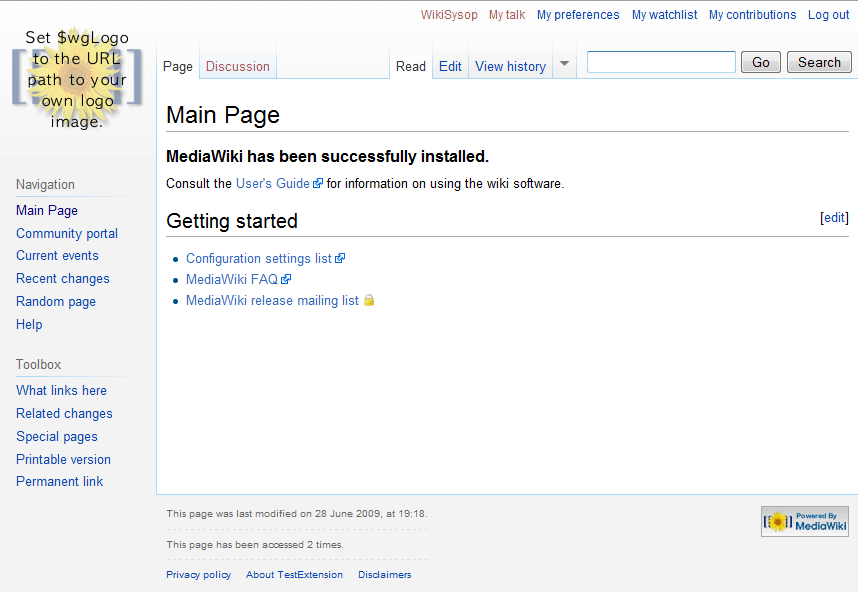
52. Flyspray
Again, I may be a little biased on this one. If you are searching for a bug-tracking and project management solution, don’t look any further Flyspray, a web-based tool powered by Apache, has exactly what you need. And don’t just take my word for it: even ArchLinux uses Flyspray for bug-tracking.
Flyspray is a lightweight bug-tracking system written in PHP that runs on any OS and focuses on a very intuitive design, allowing you to handle multiple projects at once.
It supports MySQL or PostgreSQL as database servers and provides voting functionality, email notifications (requires a separate mail server to be installed and configured), and optional Single-Sign-On (SSO) using a Facebook or Google account.
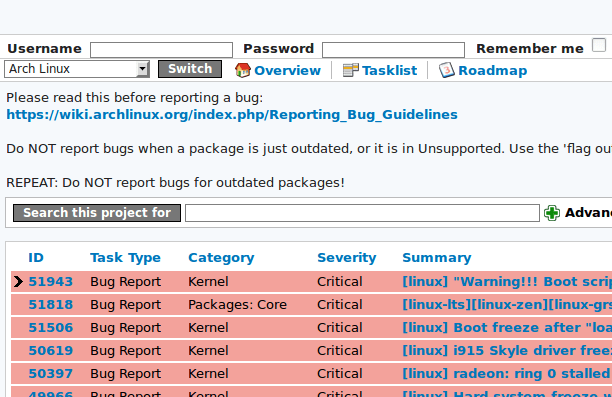
53. Odoo POS
Odoo POS is a free and open-source solution that integrates seamlessly with the rest of the Odoo ecosystem, allowing you to manage sales, inventory, and customer data all in one place.
It uses a MySQL or PostgreSQL database, so you can run multiple terminals on the same system without losing track of your data. On top of that, it comes with helpful features like a search panel, price checker, and the ability to generate printed reports, making everyday operations smoother and more efficient.
Summary
n this article, I’ve shared a curated list of free and open-source applications that I’ve discovered and found useful in 2025. My hope is that it sparks your interest in one or more of these tools and helps you find something new to enhance your Linux experience.
Are there any of these applications you’d like us to cover in greater detail? Or have you discovered another great FOSS tool that the community should know about? Share your thoughts, suggestions, or questions using the comment form below — your feedback is always welcome!


